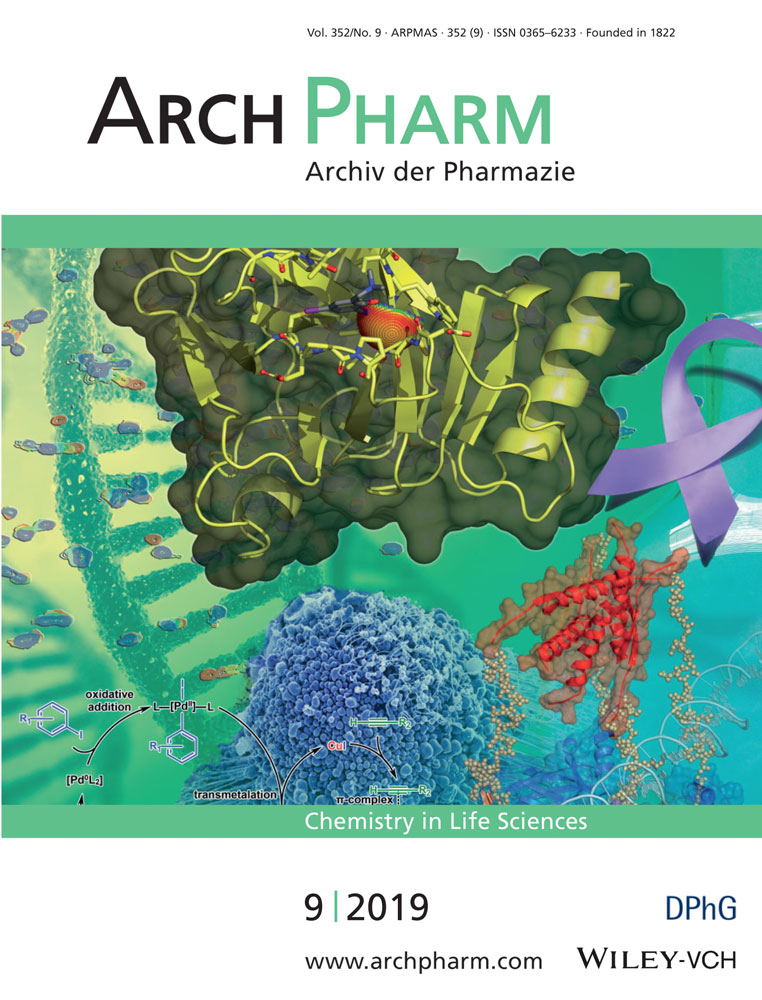Sulfonylpiperazines based on a flavone as antioxidant and cytotoxic agents
Abstract
Chrysin-based sulfonylpiperazines 7a-k were synthesized and investigated for their in vitro free radical scavenging potential as well as cytotoxic efficacies against selected cancer cell lines. Cytotoxicity of the new compounds toward noncancer cells was confirmed using the SRB assay against Madin–Darby Canine Kidney cells. Reaction of piperazine with different substituted benzenesulfonyl chlorides in triethylamine furnished sulfonylpiperazines (3a-k), which were then allowed to react with 7-(4-bromobutoxy)-5-hydroxy-2-phenyl-4H-chromen-4-one (6) prepared reacting chrysin with 1,4-dibromobutane to give the final derivatives 7a-k. The results concluded that chrysin-sulfonylpiperazines exerted better antioxidant and anticancer efficacies than previously studied chrysin-piperazine precursors. For example, compounds 7h, 7j, and 7k with 4-OCF3, 4-OCH3, and 2,4-diOCH3 groups exhibited the best antioxidant potential against 2,2-diphenyl-1-picrylhydrazyl (DPPH) and 2,2′-azino-bis-3-ethylbenzothiazoline-6-sulfonic acid (ABTS) radicals. Moreover, halogenated analogues (7b, 7c, 7g, and 7h) demonstrated promising anticancer potential against SK-OV3, HeLa, and HT-29 cell lines, whereas those bearing a methoxy functional group (7j and 7k) had beneficial effects against the cell lines A-549 and HT-29. Thus, it can be confirmed from the bioassay results that the overall structural design as well as proper substitution is crucial to deliver the anticipated biological effects. Spectroscopic techniques such as FT-IR, 1H NMR, 13C NMR, mass and elemental analysis (CHN) were carried out to confirm the final structures.
CONFLICT OF INTERESTS
The authors declare that there are no conflict of interests.




